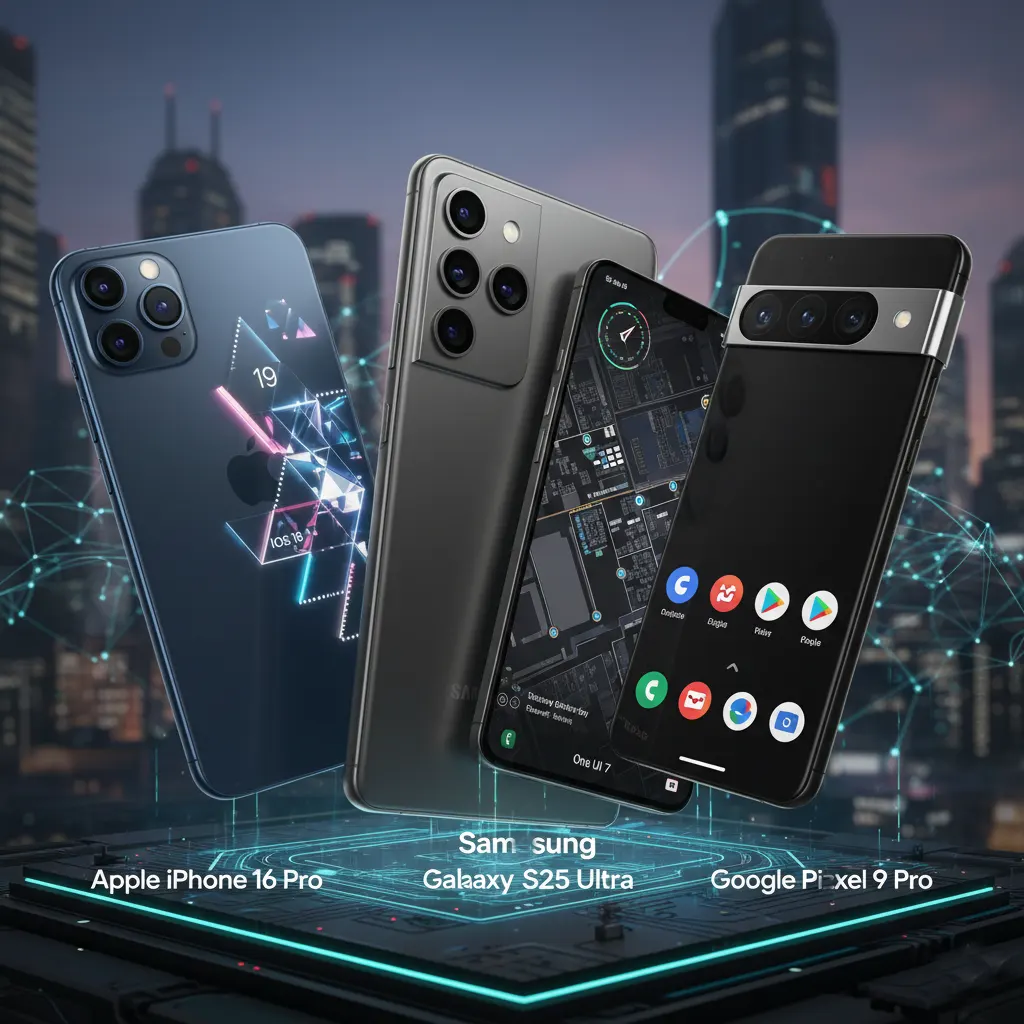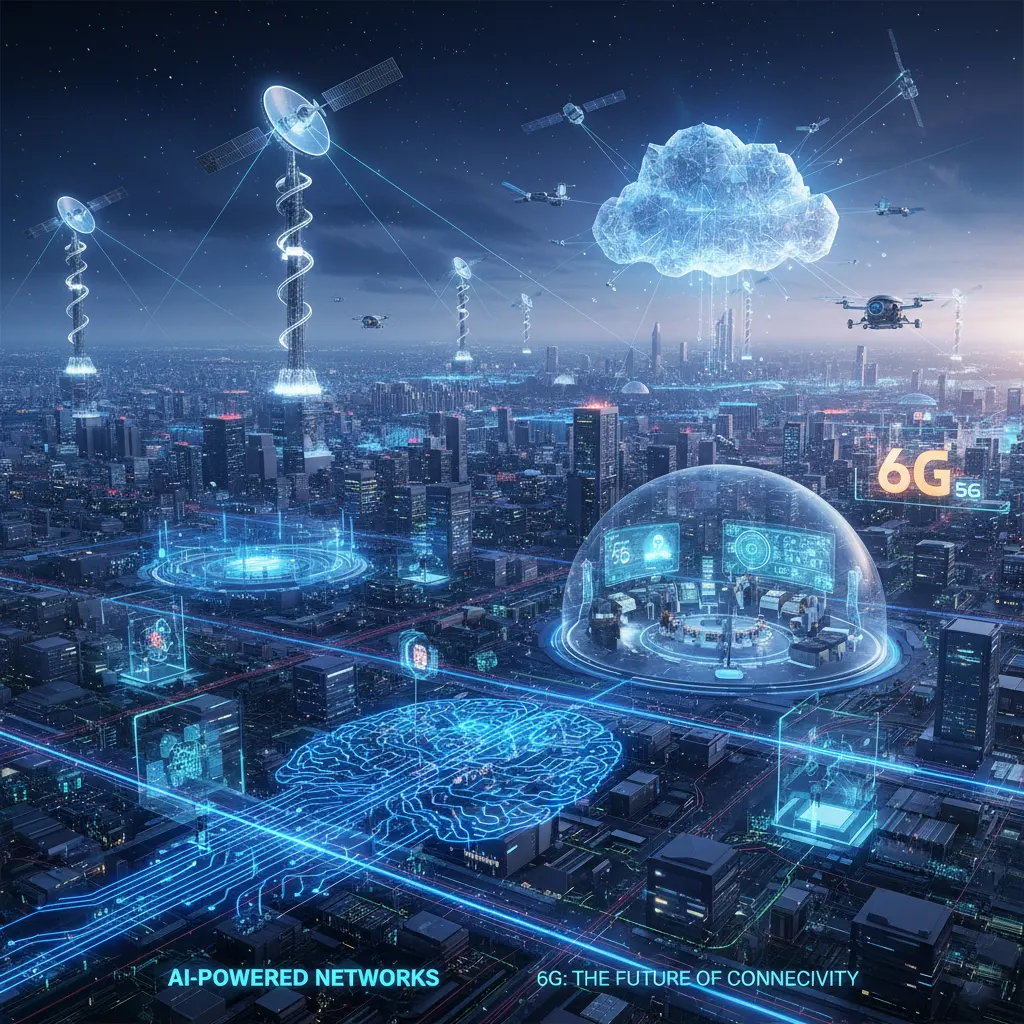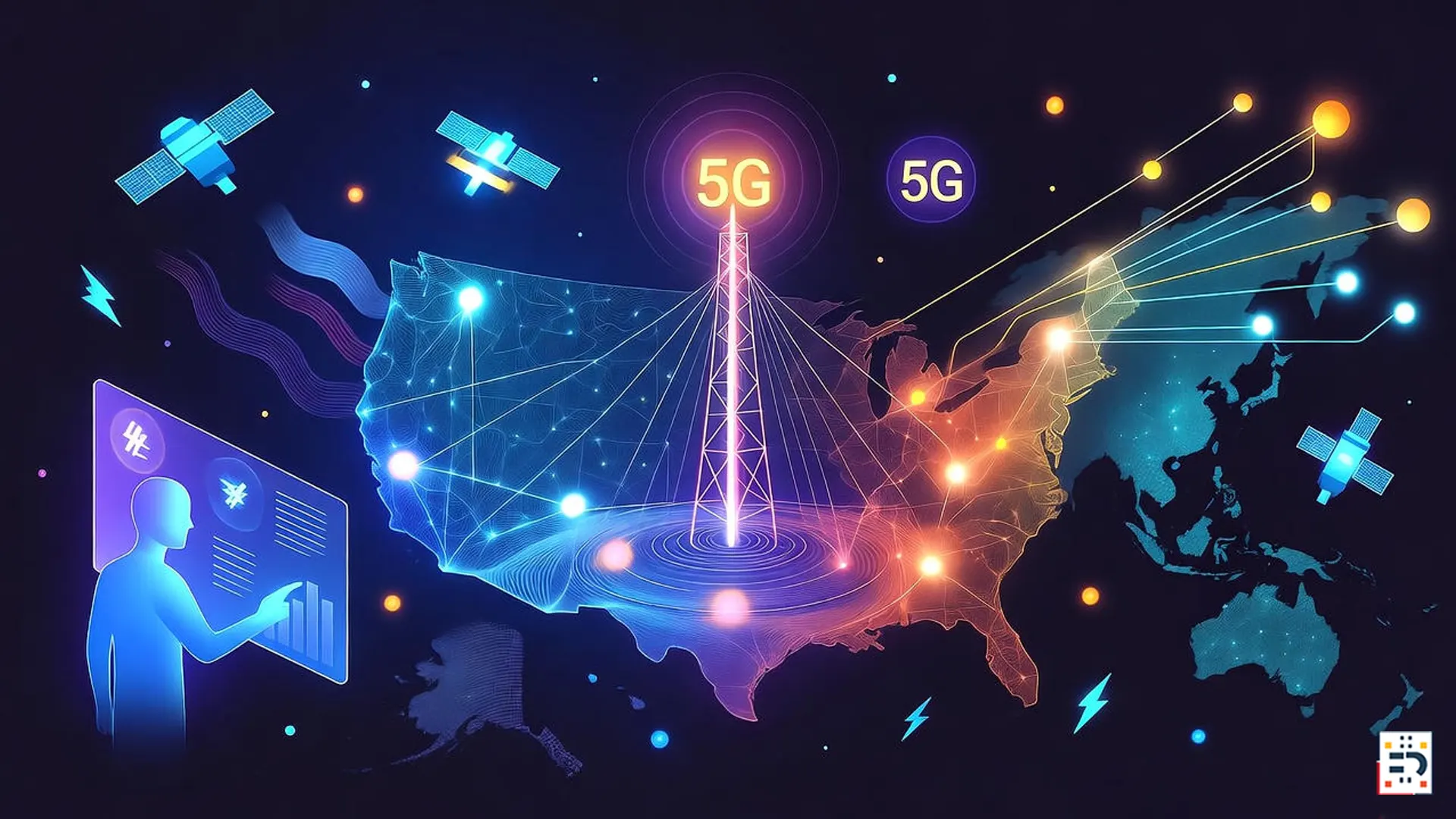Introduction to 5G in 2025
In 2025, 5G technology in the United States has become the foundation of mobile communication. The major US mobile carriers—Verizon, AT&T, T-Mobile, and Dish Wireless—are competing to deliver ultra-fast internet, superior 5G coverage maps, and improved connectivity nationwide.
With the latest 5G-enabled smartphones, Americans now experience lightning-fast downloads, lag-free streaming, and stronger connections across urban and rural regions alike. The race for 5G network performance has made the U.S. one of the most connected countries in the world.
Learn more about how 5G works from the Federal Communications Commission (FCC).
What Makes 5G Different from 4G and LTE?
Unlike 4G LTE, which focuses on speed alone, 5G networks in the U.S. deliver ultra-low latency, greater reliability, and the capacity to connect billions of devices simultaneously. Modern 5G speeds in America can reach up to 3 Gbps, transforming industries such as healthcare, gaming, and smart manufacturing.
Carriers are now utilizing C-band spectrum and mid-band frequencies to expand nationwide availability—bridging the gap between mmWave’s city-focused high speeds and Sub-6 GHz’s wider coverage.
The Latest 5G Devices: 2025 Lineup Overview
The latest 5G smartphones in the U.S. cater to every budget and lifestyle—from premium flagships to affordable models that make high-speed connectivity accessible to everyone.
Top Flagship 5G Smartphones of 2025
Apple iPhone 16 Pro and 16 Pro Max 5G Capabilities
Apple continues to dominate the U.S. market. The iPhone 16 Pro series integrates the A19 Bionic chip and enhanced Qualcomm X75 modem, ensuring exceptional 5G speed and battery efficiency. It supports all US 5G bands, including Verizon’s Ultra-Wideband (UWB) and T-Mobile’s mid-band n41 spectrum.
Learn more at Apple’s official 5G technology page.
Samsung Galaxy S25 Ultra: AI-Driven 5G Performance
The Samsung Galaxy S25 Ultra is engineered for high-performance U.S. 5G networks, supporting mmWave, C-band, and Sub-6 GHz frequencies. Its AI-assisted modem prioritizes the best carrier connection automatically, a major plus for Verizon and AT&T customers.
Google Pixel 9 Pro: AI + Connectivity Synergy
Built in the U.S. and optimized for Google Fi Wireless, the Pixel 9 Pro uses the Tensor G4 chip to balance power efficiency with performance. It offers intelligent signal optimization for both urban and rural 5G zones across the U.S.

Mid-Range and Budget-Friendly 5G Devices
OnePlus 13, Motorola Edge 50, and Xiaomi Redmi 5G Series
Mid-tier 5G smartphones in America are now more powerful and affordable. The OnePlus 13 stands out with Snapdragon 8s Gen 3, while Motorola’s Edge 50 supports all major U.S. carriers. For those seeking value, Xiaomi’s Redmi 5G lineup delivers solid performance at an unbeatable price point.
US Carrier Performance: Who Leads in 5G Speed and Coverage?
Verizon: Ultra-Wideband Expansion and Speed Benchmarks
Verizon 5G Ultra Wideband dominates in speed and peak performance in U.S. metro areas. According to PCMag’s 2025 Fastest Mobile Networks report, Verizon consistently tops speed charts with averages over 3 Gbps in select regions.
AT&T: Balanced Coverage and Reliability
AT&T 5G provides consistent nationwide coverage, leveraging mid-band spectrum (C-band) for urban and suburban reliability. It offers balanced download speeds and superior signal stability, especially for business users.
T-Mobile: Leading the 5G Race in Rural and Urban Areas
T-Mobile USA continues to lead in nationwide 5G availability. With its 2.5 GHz mid-band rollout and extensive rural coverage, T-Mobile offers the best blend of speed and coverage across all 50 states. Check out T-Mobile’s official 5G coverage map for your area.
Dish Wireless: The Newcomer’s Performance Review
As America’s newest 5G provider, Dish Wireless uses Open RAN technology to build a flexible network infrastructure. Though coverage remains limited, Dish’s growth trajectory shows promise for rural American markets.
Comparing 5G Carrier Plans and Data Speeds
Speed Tests and Latency Comparisons (2025 Data)
According to Ookla’s U.S. Speedtest Intelligence report:
| Carrier | Average Speed (Mbps) | Latency (ms) | Coverage Rank |
|---|---|---|---|
| T-Mobile | 542 | 18 | #1 |
| Verizon | 498 | 14 | #2 |
| AT&T | 452 | 20 | #3 |
| Dish Wireless | 380 | 22 | #4 |
Price-to-Performance Analysis of Leading US Carriers
- T-Mobile Magenta Max: Best for unlimited data and nationwide access.
- Verizon 5G Get More Plan: Premium plan for power users and business travelers.
- AT&T Unlimited Starter: Affordable and consistent mid-band performance.
You can compare plan details directly at CNET’s 5G plan comparison.
5G Device Compatibility and Network Optimization
Choosing the right U.S. 5G device means ensuring it supports carrier-specific frequency bands. Flagships like the iPhone 16 Pro and Samsung Galaxy S25 Ultra support all U.S. bands, while some budget models might lack mmWave support.
mmWave vs. Sub-6 GHz: Which Is Better for Americans?
- mmWave 5G (used by Verizon) = Ideal for urban U.S. cities like NYC, LA, and Chicago.
- Sub-6 GHz (used by T-Mobile & AT&T) = Perfect for rural America and interstate coverage.
Emerging 5G Technologies in 2025
AI Integration in 5G Devices and Networks
Artificial intelligence now enhances everything from signal routing to predictive bandwidth allocation, making U.S. 5G networks smarter and more efficient.
Satellite-Enhanced 5G in America
Partnerships between SpaceX Starlink and AT&T enable satellite-based 5G backhaul, extending reliable service to rural Alaska, Montana, and Midwest communities. Read more at SpaceX’s Starlink official site.

Consumer Experience: Real-World 5G Performance
Battery Life and Heat Management
U.S. consumers benefit from the Snapdragon X75 modem, offering up to 30% better power efficiency and cooler operation, ensuring long-lasting usage on all networks.
Streaming, Gaming, and IoT Enhancements
5G home internet, cloud gaming, and smart home devices have become mainstream across the United States. Thanks to 5G, streaming services like Netflix, Hulu, and YouTube TV now support 4K and 8K live content without buffering.
The Future of 5G: What to Expect Beyond 2025
By 2027, 5G-Advanced will improve energy efficiency, network automation, and prepare for 6G networks expected by 2030. U.S. tech leaders like Qualcomm and Nokia Bell Labs are leading the way in terahertz communication research. Stay updated via Qualcomm’s 5G insights.

Choosing the Right 5G Device and Carrier in the U.S.
The U.S. 5G landscape is thriving in 2025. Whether you’re after fastest speeds, nationwide coverage, or best value, there’s an ideal match for every American user.
- Best Overall: T-Mobile (coverage + affordability)
- Fastest Speeds: Verizon Ultra-Wideband
- Most Reliable: AT&T Mid-band 5G
- Emerging Innovator: Dish Wireless
The combination of the latest 5G devices and high-performing U.S. carriers marks a new era of connectivity, powering smart homes, autonomous vehicles, and the future of work.
Learn more from PCMag’s U.S. Carrier Comparison.
#5GUSA #5GDevices #USCarriers #5GTechnology #Verizon5G #ATT5G #TMobile5G #5GSmartphones #Tech2025 #MobileNetworks #US5GPerformance #5GConnectivity #WirelessInnovation #NextGen5G #FastInternetUSA


